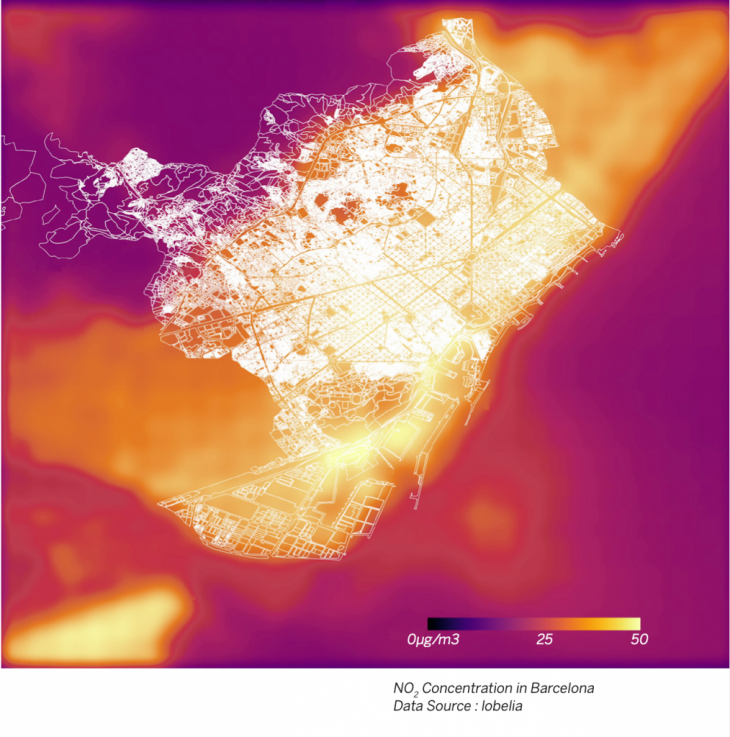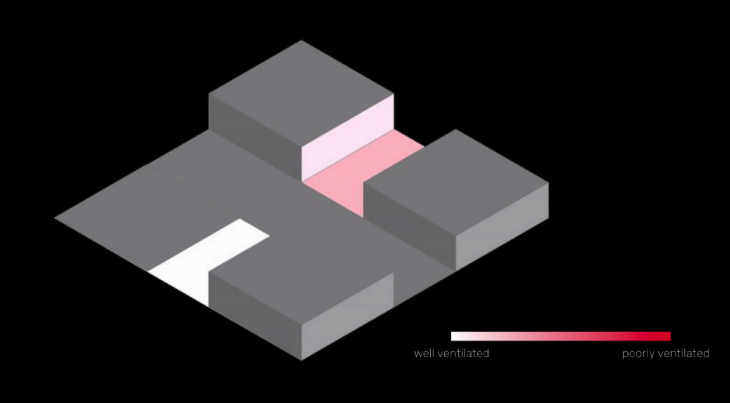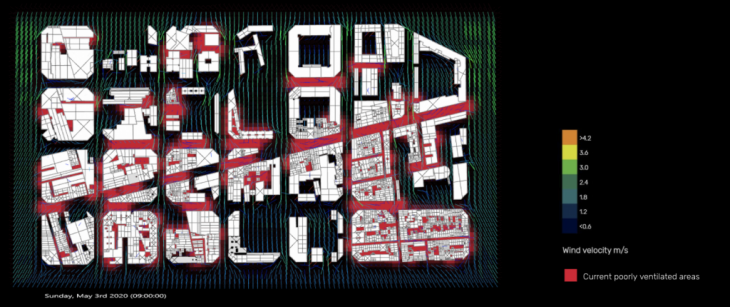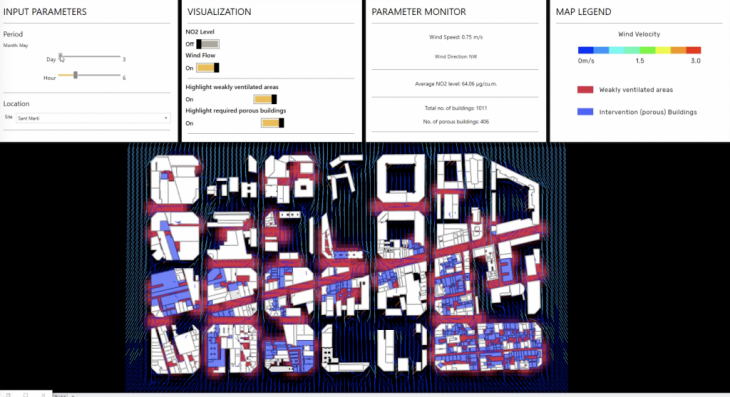Introduction
Our goal is to address urban ambient air quality. This is a problem that can be addressed with multiple methods. Our expertise led us ultimately to a dynamic mesh played within a network of buildings whose movements would depend on current wind and pollution conditions.

Methodology

We began by gathering data. Lobelia provided us with high resolution, hourly NO2 data for the city of Barcelona. Air pollution and wind phenomena are one in the same so we also ran wind simulations on the immediate 28 blocks in question. This, along with research, led us to the distillation that stagnant air, being a culprit of poor air quality, is most present given certain urban shape conditions. High aspect ratios of building height:street width are an especially bad condition.

We created a program that takes in a site model and particular wind conditions and returns areas where these undesirable vortices that are most likely to lead to poor air quality, are most likely to be present. We aligned our threshold such that several base tests aligned with the proper wind analysis simulations. Now we have an efficient way to respond to live wind conditions with an intervention such as removing buildings.

Interface
Our methodology results in an interface where the user can observe the output of where removing buildings is ideal given an input of any site model and any wind direction.
